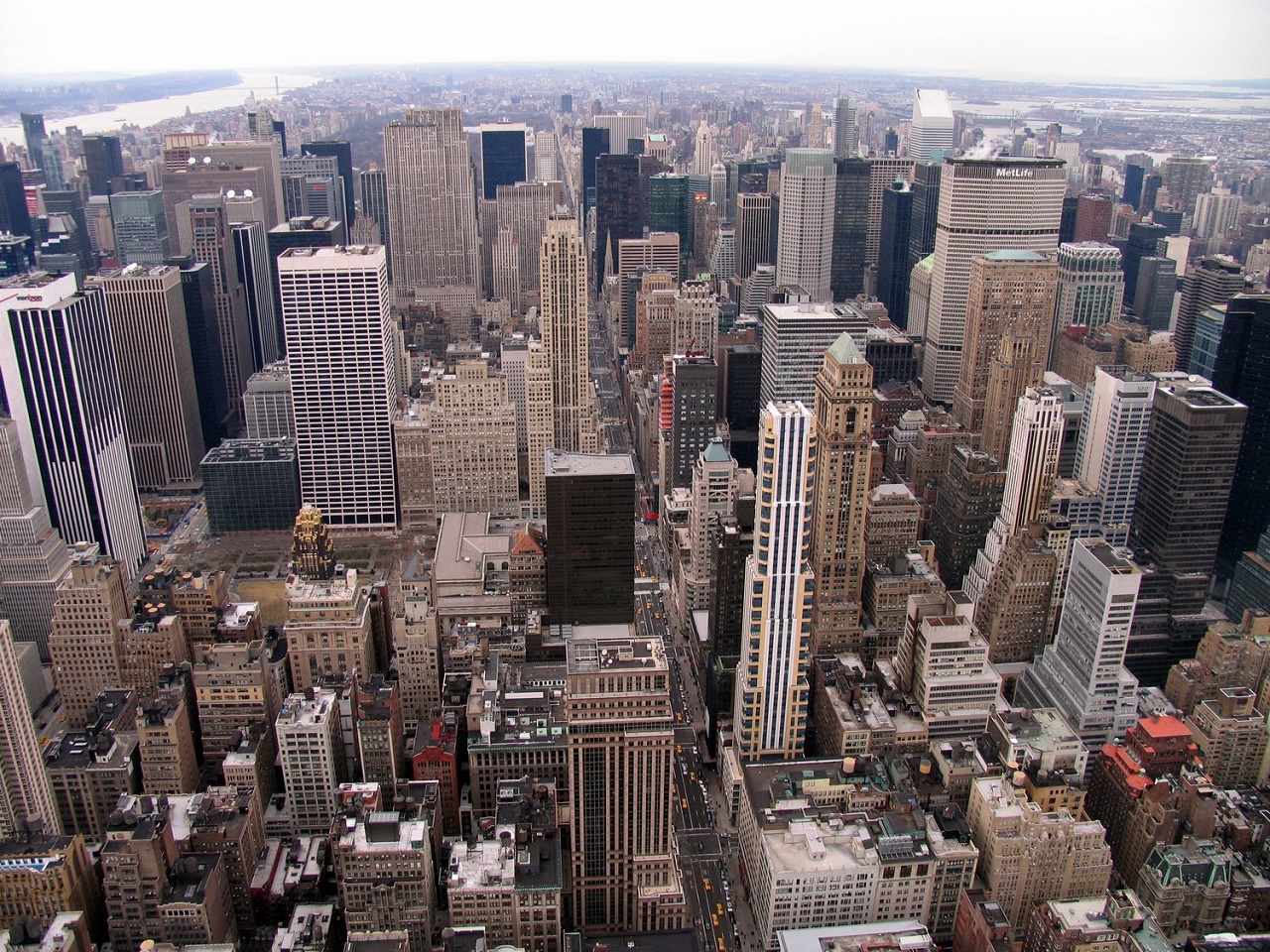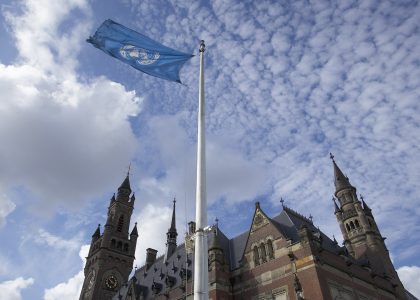In this post Dr Simon Curtis reflects on the remarkable transformation of the world’s major cities over recent decades, and their relationship to the broader transformation of international political order. As components of a nascent global order, cities have been endowed with new capacities, and are taking on new governance roles. These developments point to the crucial role that cities will play in the future of global politics.
Over the course of the last four decades a remarkable transformation has taken place in cities around the world. New urban forms have emerged that possess unique features and characteristics that mark them apart from earlier forms of cities. These changes have been widely noted, but what is less often remarked upon is that there is a link between urban transformation and the emergence of a new form of global political order.
One clear marker of urban transformation has been the sheer scale of contemporary cities. The rural world of yesterday has been uprooted, as populations have either been drawn from the land to seek the opportunities that only city life can offer, or pushed out from traditional agricultural occupations by a combination of technological advance and structural adjustment programmes. Concentrated into just 2% of the world’s surface, the great urban hubs now hold half of the world’s population, and it is estimated that by 2050 over 75% of the world’s population will live in cities. UN-HABITAT has documented how the number of cities in the world with populations greater than 1 milllion increased from 75 in 1950 to 447 in 2011, while during the same period, the average size of the world’s 100 largest cities increased from 2 to 7.6 million. In the decade between 1990 and 2000 alone there was a 30% increase in the size of urban settlements in the developed world and a 50% increase in the developing world.
Such mega-cities present problems that would have been unimaginable in the earlier epoch of Victorian industrial urbanization. Human settlement on this scale brings with it enormous challenges in practical everyday issues, such as the management of waste and the protection of public health, the construction and maintenance of transport networks, and the provision of housing. The environmental footprints of such cities are gigantic: urban areas consume about 75% of the world’s energy and produce up to 80% of its greenhouse gas emissions. These problems face cities in the developed world, but they are even more pressing in the global south, where the opening up of cities to global economic forces has been a recipe for the production of gigantic mega-slums.
Notable for their vast size, contemporary cities also exhibit another important attribute: they are connected in transnational networks. As expanding cities merge into each other, they have generated vast conurbations that stretch across multiple national territories. At the same time, advances in information and communications technologies have given city networks global reach. The stitching together of supra-territorial urban regions via transport technologies such as high speed rail links and air-traffic routes, as well as the construction of the digital infrastructure, offer a 21st-century equivalent of the ways in which networks of canals and roads integrated the territorial space of nation-states in earlier centuries. Over 20 global city regions have been identified with populations of over 10 million, some arranged around a core city, such as London or Mexico City, others taking polycentric form, such as the Dutch Randstad. UN-HABITAT continues to map and describe these mega-regions and urban corridors: Hong Kong-Shenzhen-Guangzhou with its 120 million people, Tokyo-Osaka-Kyoto-Kobe and its 60 million, Sao Paulo-Rio de Janeiro, approaching 40 million. With their vast populations, these geographic formations far surpass the size and scale of most of the world’s nation-states, raising questions about the future development of governance arrangements, and about the organizing principle of the contemporary international order: territorial state sovereignty.
Such cities are being reshaped by exposure to market forces, tapping in to flows of global capital, drawing their development from streams of financial speculation in real estate and infrastructure projects. This transformation of the city fabric has been driven by the far reaching restructuring of the global economy that began in the 1970s, and the subsequent period of accelerated globalisation. Impacted by the project of leading states to build a global market society, cities have been swollen by the full force of the agglomeration economies that they foster. Over 80% of global economic output is generated by contemporary cities. They are the points at which productivity, innovation, and wealth converge, and there is an increasingly influential analysis of the economic generative power of cities, taking inspiration from the long marginalized, but now resurgent iconoclastic insights of the great urbanist Jane Jacobs. As the urban sociologist Saskia Sassen has argued, global cities are the places from which the flows of the global economy are directed – they act as command and control hubs for the networks of multi-national corporations involved in the myriad investment decisions that shape our societies.
This connection between the global city and global economic restructuring has long been established. Generating ‘global city indexes’ for categories such as livability, business environment, or global connectivity is a favourite pastime of management consultants, and a common theme in the media coverage of cities. However, I would like to argue that these urban transformations also point to a far deeper and more profound recalibration of existing governance arrangements, and reflect a shift in the nature of the modern state. It is one thing to recognize the connection between globalisation and global city formation. But we have also to take a step beyond this – to find the origins of contemporary global cities in a shift in the nature of global political order.
Increasing interdependence has generated a number of transnational and trans-territorial problems (climate change, the instability of global financial markets, the threat of transnational terrorism) that a territorial and sovereignty based society of states is seemingly unable to cope with. The issue of climate change is a case in point: states can see the problem, but each diplomatic summit to address the issue is broken by their failure to overcome the structural limitations of an international order that developed in earlier, less interdependent, times. Crucially, for cities, part of the response to this intractable structural problem has been for states to devolve responsibility for solving these issues to other actors. This is part of the decentralising tendency that has followed in the wake of the failed statist projects that littered the twentieth century. The growing salience of various forms of global governance, involving multiple actors at scales both below and above the state, has emerged as the most promising avenue for tackling global problems. The global city takes its place in an emerging multi-scalar political order, which encourages the fusion of public and private actors into functional networks to find solutions to problems of collective action. These are forms of interaction that are horizontal, non-hierarchical, and embrace the bottom-up dynamics of self-organisation – bypassing vertical, hierarchical and centralised structures where power has so often ossified in the past.
It is in this unfolding form of global order that cities are beginning to take on new global governance roles. The current linkage between practices of global governance and market philosophy means that it becomes hard to differentiate this particular style of global governance from the overarching discourse of neoliberalism. But this describes only the contemporary moment. Although born from the decentralizing neoliberal strategy to solve problems of continued economic growth and collective action, global cities have the potential to develop in unexpected ways in the future. Perhaps the most striking development is the C40 Climate Leadership Group – a 58-city global network that also incorporates a number of private actors, such as the Clinton Foundation’s Climate Change Initiative, and the multinational engineering corporation ARUP. The C40 group seeks to take a leadership role in tackling climate change: realizing that cities already have the resources to contribute to positive governance outcomes on the global stage. These efforts take the shape of collective action, joint coordination, and common strategy, including sharing technical know-how and best practice in areas such as transportation, energy and waste infrastructures, and retrofitting. These initiatives represent a two-pronged approach to governance: both engaging with national and international forums, but also developing a parallel, self-organizing track that bypasses traditional hierarchical and state dominated channels. Cities are well motivated to take on these governance tasks: they are on the front line of transnational issues such as climate change and global security, and they are increasingly unwilling to let states fail them. They are taking action irrespective of state initiatives.
The C40 group’s early steps into global governance indicate that the forces that have partially released cities from the smothering embrace of the state have also provided them with fledgling capacities and capabilities, whose potential they are only just beginning to realize. Cities have been empowered relative to the states in which they had long been embedded, but it is important to note the limits of this empowerment: they have not gained any more legal autonomy and still remain within the bounds of state sovereignty. But the potential is there for cities to reshape global politics, and to develop their capacities in new and unexpected directions. The growing prominence of the city Mayor, for example, offers a potential focal point for the reinvigoration of popular democracy in a time in which the national and global democratic deficit is increasingly apparent. The early steps towards networked governance represented by the C40 (and many other urban networks, such as the World Association of Major Metropolises, Mayors for Peace, Sister Cities International) may augur the development of more permanent city-to-city arrangements. Indeed, the political theorist Benjamin Barber, in his recent book If Mayors Ruled the World, imagines a ‘parliament of mayors’, free from the power politics of nation states. And we should not forget that the history of political revolution has always contained an urban dimension. As the Occupy Movement, or the role of Tahir Square in the ‘Arab Spring’ suggest, cities are likely to be crucial sites of political contestation in the future, in both the developed and the developing worlds. Whatever the fate of cities, they will be central to the governance arrangements and political order of the twenty-first century.
Dr. Simon Curtis is Lecturer in International Politics at the University of East Anglia.
This post was originally posted on the World Financial Review © EBR Media Ltd, 2014. The definitive, and edited version of this article is published in The World Financial Review September/October, 2014, 2014, www.worldfinancialreview.com / http://www.worldfinancialreview.com/?p=2861.





